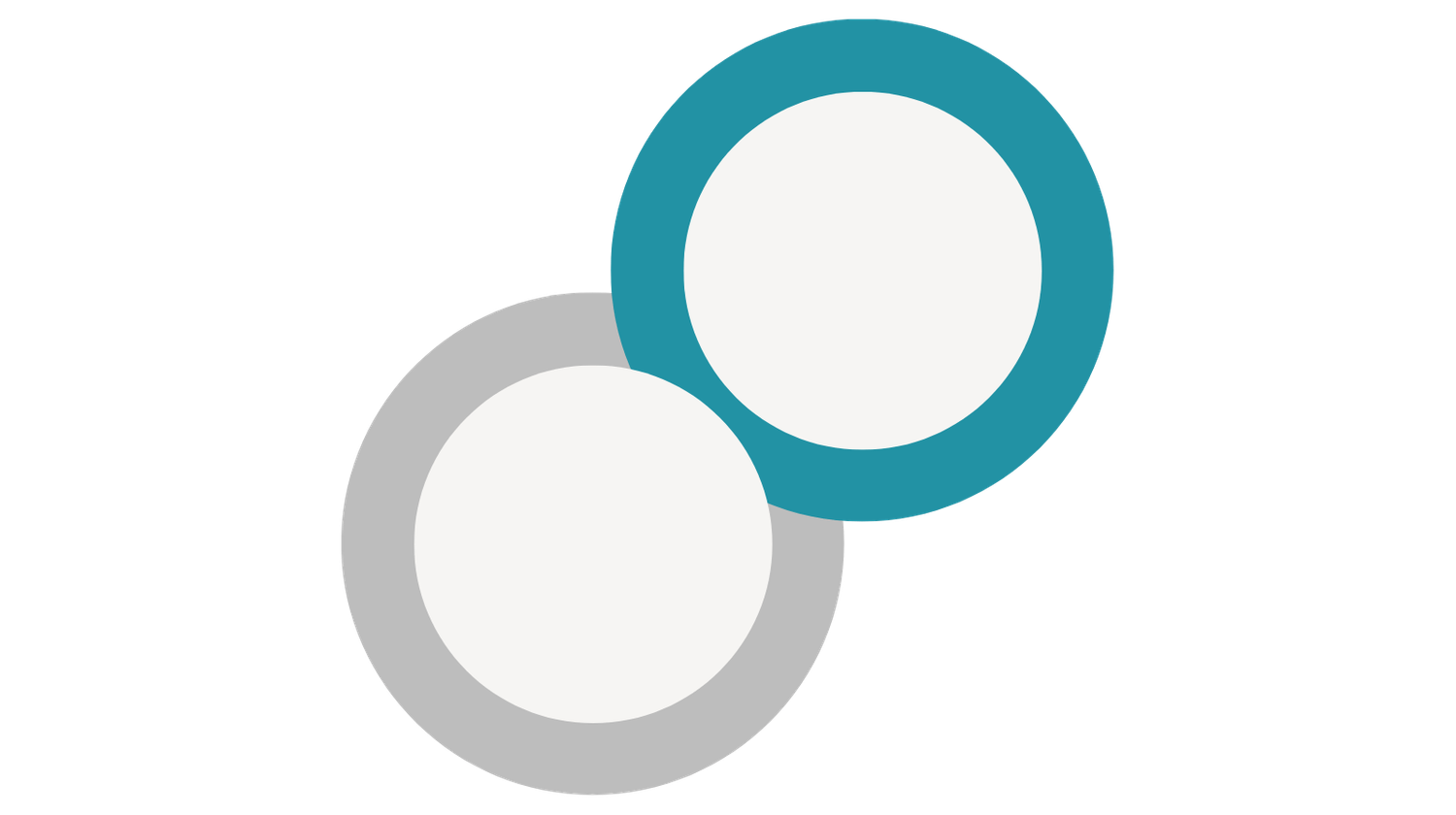Become an O8 Affiliate – Earn 20% commission on all sales.
Become an O8 Affiliate – Earn 20% commission on all sales.
The Strain: Behind the Scenes of Burnout (And How Systems Set You Free)
Episode 3 of The O8 Operation
It's 11:47 PM and you're still at your computer.

You've been "just finishing up a few things" since 9 PM. But somehow those few things turned into updating your CRM, fixing a broken link on your website, responding to client emails, scheduling next week's content, and trying to figure out why your email automation isn't working the way it's supposed to.
Your partner asked if you were coming to bed an hour ago. You said "five more minutes" and meant it. But here you are, troubleshooting a problem that shouldn't exist, fixing something that should have been working automatically, doing work that feels both urgent and completely beneath your skill level.
This is the part of entrepreneurship they don't show on Instagram. The invisible labor that happens between the highlight reels. The death by a thousand tiny tasks that slowly drain your energy, your creativity, and your will to keep building.
You started this business to have freedom. Instead, you've built yourself the most demanding boss you've ever had.
The Hidden Weight of Being Everything to Everyone (Including Your Business)

When people ask you what the hardest part of running a business is, you probably mention things like finding clients, creating content, or managing cash flow. Those are the acceptable struggles. The ones that sound legitimate when you're explaining why you're tired all the time.
But the real weight—the one that's actually crushing you—is harder to explain.
It's being the CEO, the marketing director, the sales team, the customer service rep, the bookkeeper, the IT department, and the janitor all at once. It's switching between strategic thinking and data entry seventeen times in a single afternoon. It's having brilliant ideas interrupted by the need to update a spreadsheet or troubleshoot why your payment processor is acting up.
It's not just wearing multiple hats. It's that the hats don't fit, they're made of different materials, and you're constantly switching between them so fast you're getting whiplash.
And the worst part? You feel guilty complaining about it because this is what you chose. This is what freedom looks like, right?
Wrong.
The Systems Trap That's Stealing Your Genius

Here's what nobody tells you about small business systems: most of them aren't actually designed for small businesses. They're designed for companies with dedicated IT departments, full-time admins, and people whose entire job is managing technology.
But you bought into the promise anyway. You signed up for the CRM that would "streamline everything." You invested in the email marketing platform that would "automate your nurture sequence." You integrated the scheduling tool that would "eliminate back-and-forth." You set up the project management system that would "keep everything organized."
Each tool promised to make your life easier. Instead, they created a web of dependencies that requires constant maintenance, updates, and troubleshooting. You've become the system administrator of your own business, except you never wanted that job and you're not qualified for it.
The tools that were supposed to free you have become your digital shackles.
The Real Cost of DIY Everything

Let's talk about what this constant system management is actually costing you, because it's not just time—it's opportunity.
Creative Energy Drain: Every minute you spend figuring out why your email automation tagged people incorrectly is a minute you're not spending on strategy, innovation, or the high-level work that actually grows your business.
Decision Fatigue Overload: By the time you've made seventeen micro-decisions about software settings, you're too exhausted to make the big decisions that matter.
Context Switching Chaos: Research shows it takes an average of 23 minutes to fully refocus after an interruption. If you're switching between strategic work and systems maintenance all day, you never actually get into deep work.
Expertise Misallocation: You're spending time trying to become mediocre at things that aren't your zone of genius instead of becoming excellent at things that are.
Confidence Erosion: When you're constantly battling technology instead of mastering your craft, you start to question whether you're actually good at business or just good at Googling solutions to technical problems.
Relationship Strain: The work follows you everywhere because there's always something to fix, update, or optimize. Your business becomes the third person in every conversation.
But perhaps most costly of all: Innovation Stagnation. You can't see the forest for the trees when you're constantly tending to the underbrush. You stop dreaming about what's possible because you're too busy dealing with what's broken.
The Lie About "Passive Income" and Automation

The online business world is obsessed with the idea of passive income and full automation. Build it once, let it run forever, make money while you sleep.
It sounds magical. It is magic. It's also mostly mythology.
Here's what they don't tell you about "passive" income: it requires incredibly active setup and maintenance. Those automated email sequences need constant tweaking. The "set it and forget it" sales funnels need regular optimization. The passive courses need updated content, technical updates, and customer service.
Nothing is actually passive. It's all just delayed labor.
And the businesses pushing this narrative hardest? They have teams. Big teams. They have developers, designers, copywriters, project managers, and virtual assistants handling all the "passive" parts while they focus on strategy and growth.
But somehow they've convinced you that you should be able to do it all yourself. That if you just find the right system, the right tool, the right integration, you'll achieve the same results they get with a team of twelve.
It's like watching someone conduct a symphony orchestra and thinking you should be able to play all the instruments simultaneously.
Why "Just Hire a VA" Isn't the Answer (Yet)
The advice you hear most when you complain about being overwhelmed is simple: "Just hire a VA."
But if you've tried this route, you know it's not that simple. Here's why:
Training Takes Time: You spend more time explaining how to do the task than it would take to just do it yourself. And then you have to check the work anyway.
You Don't Know What You Don't Know: You can't delegate what you haven't systematized. And you can't systematize what you don't fully understand yourself.
Quality Control Anxiety: You end up hovering and micromanaging because you're terrified something will go wrong in your business while you're not watching.
Communication Overhead: Managing people requires a completely different skill set than doing the work. Suddenly you're not just running a business; you're managing employees.
The Wrong Foundation: If your systems are already chaotic, adding more people to the chaos doesn't solve the problem—it amplifies it.
The real issue isn't that you need more people. It's that you need better systems first. Systems that actually support growth instead of creating more work.
What Systems Are Actually Supposed to Do
Real business systems aren't about fancy technology or complex integrations. They're about creating predictable pathways for the work that needs to happen repeatedly.
Good systems should:
Reduce cognitive load instead of increasing it. You shouldn't have to remember seventeen steps every time you want to publish a blog post.
Eliminate redundant work instead of creating more tasks. You shouldn't have to enter the same client information in four different places.
Provide clarity instead of confusion. Your systems should make it obvious what needs to happen next, not leave you guessing.
Scale with your growth instead of breaking when you get busy. Your systems should get easier to use as your business grows, not harder.
Support your natural workflow instead of forcing you to adapt to someone else's process.
Free up mental space for strategy and creativity instead of consuming it with maintenance and troubleshooting.
When systems work properly, they become invisible. You don't think about them any more than you think about breathing. They just happen, and they create space for you to do the work only you can do.

The Systems Stack That Actually Works
After working with hundreds of entrepreneurs who were drowning in their own technology, I've identified the essential systems every sustainable business needs—and the order in which to build them.
Foundation Layer: Information Architecture
Before you can automate anything, you need to know where everything lives. This means creating a simple, logical structure for how you store and access information. File naming conventions that make sense. Folder structures that work for your brain. Password management that doesn't require a PhD in cybersecurity.
Operations Layer: Core Workflows
These are the repeatable processes that happen in your business regularly. How you onboard new clients. How you create and publish content. How you handle customer service inquiries. How you process payments and invoices. Each workflow should be documented, tested, and optimized before you try to automate it.
Communication Layer: Client Experience
This is how information flows between you and your clients. Clear project communication. Transparent timelines. Easy feedback processes. Payment systems that work smoothly. The goal is to make working with you feel effortless from their perspective, even if there's complexity behind the scenes.
Growth Layer: Marketing and Sales Systems
Once your operations are solid, you can focus on systems that bring in new business. Content creation workflows. Lead capture and nurture sequences. Sales processes that feel authentic to your style. These systems should amplify your natural strengths, not force you to become someone you're not.
Intelligence Layer: Data and Insights
Finally, you need systems that help you understand what's working and what isn't. Not vanity metrics, but actionable insights that help you make better decisions about where to focus your energy.
Each layer builds on the one below it. Try to build growth systems before you have solid operations, and you'll create chaos. Try to automate workflows that aren't clearly defined, and you'll automate problems.
The Permission You've Been Waiting For
Here's what I want you to understand: You don't have to figure this out alone. You don't have to become an expert in every piece of technology your business uses. You don't have to build everything from scratch or DIY your way to success.
The most successful entrepreneurs aren't the ones who do everything themselves. They're the ones who focus relentlessly on their zone of genius and systematically remove everything else from their plate.
This doesn't mean you need to hire a team tomorrow. It means you need to start thinking like a CEO instead of a solopreneur. It means investing in systems that actually support your growth instead of tools that just add to your to-do list.
It means giving yourself permission to spend money on solutions that save you time, even when that feels scary. It means accepting that some problems are worth paying to solve rather than grinding your way through them.
Most importantly, it means recognizing that your time and energy are your most valuable business assets, and protecting them accordingly.
The Transformation: From Operator to Orchestrator

When you build systems that actually work, everything changes:
Your days become predictable instead of reactive. You start the day knowing what needs to happen instead of putting out fires.
Your creativity returns because you're not spending all your mental energy on logistics.
Your confidence grows because you're building something that can run without your constant intervention.
Your relationships improve because work stays at work instead of following you everywhere.
Your income becomes more predictable because your business can operate consistently even when you're not feeling 100%.
Your growth accelerates because you're working on your business instead of just in it.
But the biggest transformation is internal: you stop feeling like a hamster on a wheel and start feeling like the CEO of something meaningful.
The Hidden Strength in Your Struggle
Before we go any further, I want you to recognize something: the fact that you've kept your business running while managing all these systems shows incredible resourcefulness and determination.
You've been operating as a one-person department store, and the fact that you haven't collapsed completely is actually impressive. You've developed skills most people never acquire. You've solved problems most people would never attempt.
But now it's time to transition from surviving to thriving. From grinding to growing. From being everything to being strategic about what you choose to be.
Your struggle with systems isn't a character flaw. It's a growth signal. It means you've reached the point where you can't just work harder—you have to work differently.
What Comes Next
The strain you're feeling isn't permanent. It's not the price of entrepreneurship, and it's not what freedom looks like. It's what happens when you outgrow your current systems but haven't yet built the ones that will carry you forward.
Next week, we're exploring "The Silence"—why you're building this business in isolation and how the right community changes everything. Because even perfect systems can't replace the power of having people who understand your vision and can help you see what you can't see.
But for now, I want you to consider this: What if instead of trying to manage seventeen different tools, you could focus on mastering the few systems that actually matter? What if instead of being the operator of every function in your business, you could become the orchestrator of something magnificent?
The systems that will free you aren't the ones that do everything. They're the ones that do the right things, in the right order, in a way that multiplies your impact instead of multiplying your workload.
This is how sustainable businesses get built. Not through heroic individual effort, but through intelligent design.
Ready to stop being the bottleneck in your own business?
The O8 Operation continues next Tuesday with Episode 4: "The Silence" - Why You're Still Doing This Alone (And How to Find Your Strategic Community).
Systems that support instead of strain you are just one layer of The O8. Ready to see how all eight elements work together to create a business that runs on strategy instead of stress? Learn more about The O8 here.
The BRIEF
Strategic insights that cut through the noise. No fluff, no guru speak—just what's working now and what's coming next.
Because guesswork isn't strategy.
The GRAB
Tools that actually work. Templates, frameworks, and systems you can use today—not someday.
Systems scale. Chaos collapses.
The ASSETS
The key to success is here in The ASSETS. Tackle your business challenges head on with the tools you didn't know you needed.
Get The BRIEF
Smart plays - straight to your Inbox!



